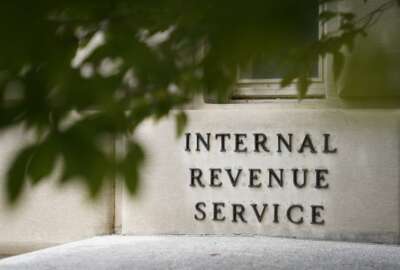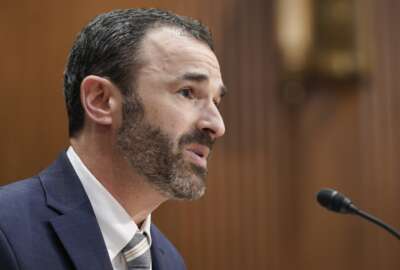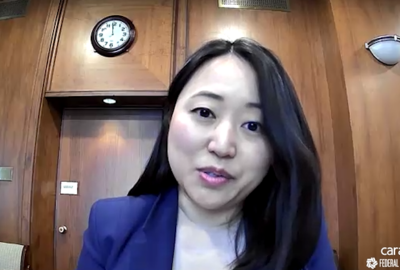When DOGE says delete the IRS, it might shoot itself in the foot
Even a shrunken government would need to collect taxes to carry out functions it has left. The IRS is a case in point.
Even a shrunken government would need to collect taxes to carry out functions it has left. Retired public administration professor Bob Tobias said that fact seems to be lost on those rascals from the Department of Government Efficiency. The IRS is a case in point. Tobias joined the Federal Drive with Tom Temin to discuss.
Interview transcript:
Tom Temin: And yes, if you cut the IRS too much to the bone, especially in the progress it’s made, you’re saying that would actually harm DOGE’s own efforts to have an efficient government?
Bob Tobias: Well, I think so, Tom. I think so. After nine years of reduced IRS funding that led to reduced taxpayer service, the phones weren’t being answered and reduced tax collections. In 2022, Congress allocated $80 billion over 10 years to move the IRS from its 1960s technology to the 21st century, what a great idea, increased taxpayer service and increased tax collection from those who refuse to pay what they owe. And the IRS has been on a two-year roll of significant achievement. It’s done more and done it more efficiently than ever before. But ironically, President-elect Trump has indicated he intends to fire the current IRS commissioner who has led this success. He’s been responsible for this success. Before his five-year term expires in 2027, the DOGE man, Elon Musk, suggests that the IRS, as he says, ‘should be deleted.’ And I say all this ironically because Congress enacted the Government Performance and Results Act in 1993 to encourage agencies to identify their goals and objectives, report them to Congress, report them to the public. The IRS has done all of that and proven that it could achieve its goals and do it efficient. But maybe all of that’s going to be ignored. But let’s look at the success.
Tom Temin: Yeah, I was going to say, let’s maybe enumerate some of the changes in the IRS over the last couple of years that have been pretty impressive.
Bob Tobias: Yeah, let’s look at taxpayer service. IRS hired 5,000 employees to answer taxpayer questions and increase the percentage of taxpayer calls actually answered from 15% to 87%. I’d say that’s pretty significant. And then it increased the staffing in the taxpayer service centers where people can come and speak in person with a customer service representative from the IRS because they don’t like to use the phones, they’re older or whatever, but increase that service. And then they piloted direct file in several states, which allows taxpayers to file directly with the IRS and do it free of charge. Significant increases in taxpayer service.
Tom Temin: Yeah, that was an interesting debate, by the way, that whole idea, because there were paid services that would file electronically or you could have your tax preparer do it for you. But an industry argued why should the IRS compete with industry by allowing direct e-filing but without the typical software? But that argument doesn’t necessarily hold up because if you wanted to mail in a return, you could mail it for the cost of a stamp. There was no paper fee. So why would there be an electronic fee?
Bob Tobias: So there’s a benefit to the taxpayer, but there’s also a benefit to the IRS because it doesn’t have to scan that mailed-in file to its master file. So if the taxpayer does it for free, it benefits the taxpayer and also the IRS.
Tom Temin: That’s called efficiency, I guess?
Bob Tobias: I guess it would be called efficiency accurately Tom.
Tom Temin: We’re speaking with Bob Tobias. He’s a distinguished practitioner in residence emeritus at American University. And I think we should also point out you were also the founding president of the National Treasury Employees Union, which one could say has been the partner of the IRS through these years?
Bob Tobias: It has, Tom. It has. But let’s take a look at the taxpayer compliance efforts. The IRS collected $1.1 billion, that’s with a b, from 1600 individuals, all of whom made more than a million bucks a year and owed $250,000 or more. No question about them owing it. Everybody knew that they owed the money, but the IRS didn’t have anybody to follow up and collect. And when they got to staff to follow up and collect, they collected $1.1 billion. And second, the IRS focused on 25,000 people who made more than a million bucks a year and another 100,000 who made between 400,000 and $1 million a year who failed to file their taxes between 2017 and 2023. Again, no ability to follow up, but now they have the ability to follow up. And finally, the IRS tripled its audit rates on large corporations and partnerships with more than, get this, $10 million in assets and secured $100 billion in taxes. Good for taxpayers, good for the IRS. Then the efficiency. The IRS spent the vast sum of $0.34 for every $100 it collected from the audits it initiated. That’s not bad, Tom. $0.34, you get $100 back. But, of course, they’re just getting started. It’s estimated that taxpayers owe $696 billion. And there’s a lot of dispute about that number. Maybe it’s too large, maybe it’s too small. But I think we can agree it’s a lot of money no matter what. And I don’t believe it’s possible to drive that number to zero. But the IRS has proved it could close that gap with adequate funding. It has become more efficient and more effective. It has, Tom, evaluated solely on the basis of being a more effective and efficient business. It’s check that box. By any objective measure, the IRS performing better, which is in the interest of every single taxpayer who pays what they owe, when they owe it.
Tom Temin: So your message to Elon Musk is you worry about making sure your self-driving cars don’t crash and leave the IRS alone for the benefit of the American public?
Copyright © 2025 Federal News Network. All rights reserved. This website is not intended for users located within the European Economic Area.
Tom Temin is host of the Federal Drive and has been providing insight on federal technology and management issues for more than 30 years.
Follow @tteminWFED






